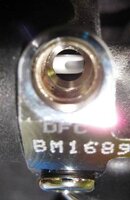Hello,
I was wondering what exactly is the difference.
I just read a manual for a regulator but I though there were only two types of ports, High Pressure ports where the SPG and Air Transmitters connect, and the Low Pressure port that are used by the BDC, Drysuit and Second Stages.
Can you please someone clarify the difference and what is using which port.
Many thanks,
Socc
I was wondering what exactly is the difference.
I just read a manual for a regulator but I though there were only two types of ports, High Pressure ports where the SPG and Air Transmitters connect, and the Low Pressure port that are used by the BDC, Drysuit and Second Stages.
Can you please someone clarify the difference and what is using which port.
Many thanks,
Socc





